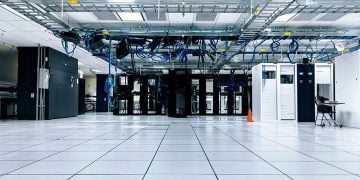Humans can strengthen cybersecurity against malicious and disruptive cyber threats by leveraging cognitive technologies such as artificial intelligence, machine learning, automated and adaptive networking, and supercomputing.
Introduction : Enhance Smart Cybersecurity
There is a growing human need for intelligent cybersecurity, which requires managing risk by reducing security breaches. Evolving cognitive technologies (including artificial intelligence, machine learning, automated and adaptive networking, and supercomputing) can help humans strengthen cybersecurity against malicious and destructive cyber threats.
At present, the basic activities of artificial intelligence computers include speech recognition, learning planning, and problem-solving. Computing systems employing artificial intelligence (AI) and machine learning (ML) are becoming more common and critical to network operations. Overall, AI technologies can help defend against increasingly sophisticated and malicious malware, ransomware, and other attacks. AI is not yet conscious, but the future will likely see AI’s cognitive autonomy in predicting and mitigating cyberattacks.
1 – Machine learning
Machine learning, often combined with artificial intelligence, is considered rapid automation of predictive analytics. It provides the fastest way to identify new cyberattacks, draw statistical inferences, and push this information to endpoint security platforms. Artificial intelligence and machine learning can be used to monitor and detect anomalies in networks and identify new threats without known signatures. It can also be used to correlate data from silos to understand the nature of attacks and assess network vulnerabilities and risks.
2 – Automated and Adaptive Networking
Automation allows horizontal scanning and monitoring of the network, with real-time reporting of deviations and anomalies. It allows automatic updating of defense framework layers (network, payload, endpoint, firewall, and anti-virus) as well as diagnostic and forensic analysis of network security. Both artificial intelligence and machine learning can serve as core components to support the application of automated and adaptive networks.
3 – Supercomputing
Supercomputers are the engines of future automation. In its study “The Future of Supercomputing,” the National Academy of Sciences envisions that investment in supercomputing is highly beneficial, and it plays a vital role in national security and scientific discovery. In the field of cybersecurity, supercomputers are also promising.
Conclusion
People’s fallibility has always been a vulnerability in cybersecurity. This is likely to become more acute with the development of digital connectivity (i.e. remote working in IoT smart cities). Intelligent cybersecurity plays a huge role in identifying, filtering, defending, and remediate cyber threats. By leveraging ever-evolving enterprise tools such as artificial intelligence, machine learning, automated and adaptive networking, and supercomputing, institutions will be more likely to meet future challenges.



























